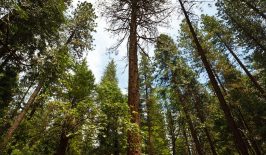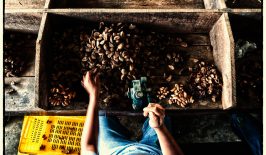Rising global temperatures can affect our flora and fauna in a number of ways. Take for example, the alpine forests of Europe. The increased average temperature in these regions has placed more stress on coniferous trees, such as pine and spruce, making them weaker to new pathogens and diseases which appear to thrive in the new conditions.
Now, researchers are developing a system by which they can decode the genetics of individual plant species and then select those plants which present the strongest defences to these diseases. It is hoped that by carefully selecting trees and then replanting certain forests, the overall health of plants in alpine regions will increase in the long term – or at the very least it will be possible to mitigate the damage caused by new diseases.
Scientists with the Austrian Research Center for Forests had become increasingly alarmed about the spread of one particular invasive pathogen strain dubbed needle bladder rust (Chrysomyxa rhododendron). The disease, which constitutes one of the major threats facing trees across the globe, is especially dangerous for the Norway spruce as it causes its needles to yellow and fall out prematurely. This rarely kills an older tree, but does result in a significant reduction in growth and tree health, making it more susceptible to other issues. Younger trees can be killed, however.
Controlling the spread of the disease is difficult, as it is passed between plants by insects, some of which are themselves invasive – or have grown in numbers due to the warmer environment. Tree diseases are nothing new, and on the evolutionary scale they have developed alongside plants’ own defence mechanisms – resulting in an uneasy balance that has rarely caused extensive harm. In fact, native pathogens can be beneficial, creating habitats, enhancing biodiversity and assisting nutrient cycling. However, the new invasive nature of the diseases and the speed at which the environment is changing has skewed this relationship.
The rise in commercial forests, which often consist of only a single tree species – otherwise known as a monoculture – can also exasperate issues as disease can rapidly spread through these kind of areas.
Sprucing Up Their Defences
In order to give the trees more of a fighting chance, the team at the Austrian Research Centre for Forests, headed by Dr Carlos Trujillo Moya, looked to unravel the molecular defence mechanism of the Norway spruce to better understand how it functions.
In a new study published in BMC Genomics, they explain how they discovered that certain individual trees can produce a hypersensitive response that results in a stronger counterattack against the pathogenic fungus needle that bladder rust creates. The fungus itself is attacked by a complex cocktail of proteins and chemical compounds which can isolate the fungus, allowing the infected part of the needle to die in a controlled manner, while saving the remainder of the tree. This defence occurs around two to three weeks after the initial infection and lasts around a month.
Armed with this information, the team can now better identify the more resistant trees and produce clones of them. These hypersensitive Norway spruces can then be used in replanting programmes to reinforce the forests, both increasing the general health of forests and also preventing the disease spreading further into large wooded areas or into new regions.
In reality, this discovery may be most beneficial to commercial foresters who wish to maximise the growth and productivity of their trees. The Norway spruce, in particular, is one of Europe’s most economically important trees, and in some places where it has been imported, is considered an invasive species in its own right. However, this type of investigation and selected cultivation could help protect other species from similar threats in the long run and helping to maintain the forests that are so crucial to life on this planet.






